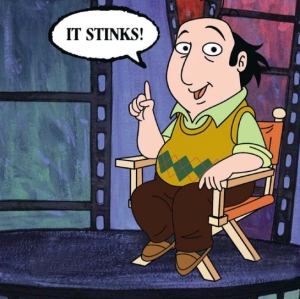
Greg Oden was Mr. Basketball USA coming out of high school, a college All-American, and a defensive player of the year as a freshman at Ohio State. His 7-foot 250-pound frame exuded the essence of dominance on the court. This man was not only going to be an NBA star he was going to be a franchise player. NBA scouts, who were paid a handsome sum for reporting how great he was, and their corresponding teams salivated over the possibility of winning the NBA lottery to take him #1 overall and who could blame them? He met all of the metrics. He would be the reason that the drafting team, who was typically one of the worst in the league the year before, would transition to be a title contender.
Greg Oden was indeed drafted #1 overall. Interestingly enough, there are two very productive players from that draft, Kevin Durant, an NBA all-star, champion, and MVP who was taken #2, and Marc Gasol, an NBA champion and defensive player of the year who was chosen in the second round at #48. Sadly, Greg Oden was plagued by injuries which prevented him from living up to his NBA potential. While no one would have really batted an eye if Kevin Durant was chosen #1, there would have been pandemonium if Marc Gasol was even close to the top-ten draft picks, even though his big brother was taken #3 overall and was doing wonderfully.
Now the advantage of the NBA, NFL, and other sports systems is that even after the draft, players like Marc, who as a second rounder does not have a guaranteed contract, can try out and still make the team. There is no such luck for people trying to enter the professoriate. After your post-doctoral fellowship of finite terms, it is near impossible to play the minor leagues or get off the practice squad to get enough standing and gain access to a research-intensive tenure track position. Given these constraints, it is no wonder that search committees take the #1 overall draft pick, the person that fits the mold, the Greg Oden and not the Marc Gasol. One could easily blame (and rightfully so) the woes of choosing Oden on injuries, but there are also Anthony Bennett’s, JaMarcus Russell’s, and others who fit the mold, but never lived up to their potential. To go further, in baseball, basketball, football, and hockey, no #1 draft pick has ever been considered the GOAT (greatest of all time) in their respective sport.
But what exactly is the mold for someone coming into the professoriate, specifically for a biomedical research-intensive position? By and large the first two cutoffs are funding and great papers; akin to points, rebounds, and assists in basketball. I certainly I didn’t get any NIH or society funding and I had three good, (but not CNS) papers and a review. I didn’t fit this mold at all. I am that second round pick. However, no one expects the NBA player to also coach, drive the team bus, or balance the books, but yet, these types of things are essential to be a successful professor. Professors rarely succeed if they don’t have these types of intangibles, or the ability to juggle more than just science.
In graduate school, I and many that are underrepresented minorities (URMs) did a lot of those intangible items, not only because people asked us to serve in a multitude of areas for the sake of having representation, but because we also wanted to be that representation. It was representation in the first place that inspired many of us to want, feel, and continue on to be represented. I did service, mentoring, teaching, and more. It made science more fun to do those things. Doing those things have also made me a better professor today.
The argument against looking deeper into the pool of applicants is that it takes time, money, and lots of effort. Again, sports scouts get paid lots of money to grade hundreds or thousands of prospects to see which one a team should take. It is their job to do that. This scoring happens at the college level choosing which high school students to offer a scholarship to all the way to the pros determining which college students will help a pro team win big. In science, hundreds of applications have to be distilled down to five or so people to bring in to meet and greet (if you are lucky) and that is a lot. Practicality has to be valued, especially given the juggling act of being a professor, where it is our job to do so many things.
From the ASM article, I talked about nine things that can help with hiring minorities as faculty. Those points include talking to a URM faculty to see what made them come to the university, where to find people that fit the mold that you have, and being willing to spend money and time to make these hires (because commitment without currency is counterfeit). However, there is one crucial message that I left out. A tenth point.
10. Don’t be afraid to hire a Marc Gasol.
MDLJ
This is part 3 in my minority hiring series with the ASM article (linked above) being second and the mSphere article (which instead of pipeline I use an analogy of an active transporter) being first.




 There has been a lot going on lately. In the news, on the job, in the home. (Although the first has made me actually weep, the last two have been very good). I think about some parts of my journey (
There has been a lot going on lately. In the news, on the job, in the home. (Although the first has made me actually weep, the last two have been very good). I think about some parts of my journey (
 I was terrified. I was crying. But I jumped.
I was terrified. I was crying. But I jumped.